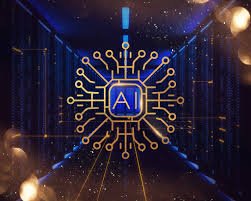The post What are the different Blockchain technologies? appeared first on Magnimind Academy.
]]>Types of blockchain technologies
![]()
Originally created for the digital currency Bitcoin, the blockchain technology has now opened up a new era for the tech community with its lots of other potential uses. Major blockchain technologies are distributed into three categories – private blockchain, public blockchain, and hybrid blockchain. Let’s have a detailed look at each of them.
1- Private blockchain
![]()
These are permissioned blockchains that don’t let any user to join the network freely and read/write to the ledger. It comes with an access control mechanism that remains between the users’ list connected to the network. Private blockchain is widely popular among companies that are likely to record transactions securely and interchange critical information between one another. It’s important to note that in this type of blockhains everyone is aware of the users’ identity but only those with appropriate permission can see the transactions. Additionally, as the consensus process doesn’t involve every user, a private blockchain offers higher throughput than a public blockchain.
2- Public blockchain
![]()
This is an open-source blockchain and allows everyone to participate as users, developers, miners, or community members. All transactions taking place on this blockchain remain fully transparent, which means anybody can review the transaction details. These blockchains are designed to be completely decentralized, which means transactions that are being recorded in the blockchain or their processing orders can’t be controlled by any single entity or individual. A public blockchain offers anonymity that promotes users’ privacy. A user isn’t supposed to disclose any type of personal information before submitting smart contracts and transactions.
3- Hybrid blockchain
![]()
You can think of a hybrid blockchain as a unique type of blockchain that attempts to utilize the best parts of both public and private blockchain solutions. The biggest distinguishable feature of this blockchain is that this isn’t open to everybody but still comes with major characteristics like transparency, security, and integrity. Here, the members can decide which transactions are to be made public or who can join the blockchain. This enables organizations to work with their stakeholders in the best way possible.
Final Words

The blockchain technology has dramatically improved the fidelity and confidence between parties involved in a blockchain, while breaking down the workflow. The job market in this field, ranging from established organizations to startups, looks bright for blockchain enthusiasts and we can expect it to grow exponentially in the next few years. So, if you’re looking for a field that would help you kick-start your tech career, you can think of learning the blockchain technology.
. . .
To learn about blockchain, click here and read our another article.
The post What are the different Blockchain technologies? appeared first on Magnimind Academy.
]]>The post Blockchain: How can we use it and what skills are required to learn? appeared first on Magnimind Academy.
]]>1- Popular blockchain use cases
1.1- Improved supply-chain communications
![]()
The majority of products that we purchase aren’t manufactured by any single entity. Instead, there remains a significant number of logistics and raw materials suppliers for a specific product before it comes to the market. Probably the biggest problem with such a system is if one single component fails, the entire brand has to experience negative outcomes. With the help of blockchain, it’s possible to clearly pinpoint the stage where the product has reached within the chain.
1.2- Distributed storage
![]()
These days, most people different types of storage services which aren’t immune to institutions that can force them to disclose the information. However, on the blockchain, data remain decentralized and stored in different high encrypted devices on a network. This leads to reduced risks of potential data breaches.
1.3- Unmatched IoT
![]()
IoT is all about the network-controlled management of specific types of electronic devices. With the help of smart contracts, it’s possible to automate the remote systems management. A combination of software, the network, and sensors facilitates an exchange of data between mechanisms and objects which leads to improved cost monitoring and increased system efficiency.
2- Skills required to become a blockchain developer
![]()
These days, more and more businesses are planning to adopt blockchain to reap the advantages of the technology. As a result, they’re looking for the right talents to help them drive results. If you too are interested in learning blockchain, here’re the skills you should focus on.
2.1- Data analysis
![]()
One of the greatest benefits of blockchain is data. To become a successful blockchain developer, you’d need to someone who can understand data and make use of it to be presented to a wide range of people across the business.
2.2- Programming
![]()
Like all other software-based implementations, blockchain also requires programming knowledge to work with. One of the most popular languages in blockchain development is C++ which you might have already learned. It’s advisable to have a good understanding of a few programming languages including C++, Python, Ruby, Java, and Solidity.
2.3- Business acumen
![]()
In the future, blockchain is going to impact every industry and every organizational role. Therefore, it’s highly crucial to understand a business thoroughly as the technology works in a way where every entity has a unique access and view.
Conclusion

If you’re interested to step into the field of blockchain, this is the best time. The fundamental tools of building blockchain applications remain the same virtually. And you can easily find a good number of reputable institutes that offer specialized courses on the technology that would make your journey of becoming a blockchain developer much easier.
. . .
To learn about blockchain, click here and read our another article.
The post Blockchain: How can we use it and what skills are required to learn? appeared first on Magnimind Academy.
]]>The post 9 Blockchain mistakes and how to avoid them appeared first on Magnimind Academy.
]]>1- Considering it as a complete application
![]()
One of the biggest reasons behind the failure of many blockchain projects is that businesses often consider it as a complete business solution, which isn’t true. While the technology can be used in a diverse range of scenarios and industries, it doesn’t come with features like business logic, user interface, interoperability mechanisms etc. So, it’d be wise to consider blockchain as a protocol that can be used within a full application.
2- Considering it as a pure storage mechanism
![]()
Blockchain was designed to offer an immutable, trusted, and authoritative record of events triggered by a collection of untrusted parties. In its present form, blockchain technology doesn’t come with the key features of a traditional database management technology. So, you should review your data management requirements of the blockchain project and implement a traditional data management solution when required.
3- Assuming it as a permanently dominant technology
![]()
Businesses often assume that blockchain will always remain a dominant technology, which isn’t true. It’s evolving constantly in both application and technology and thus, it’s important to consider it as a short-term option to attain a business solution.
4- Assuming the smart contract technology is mature
![]()
Business leaders sometimes assume that smart contracts are fully matured, what they aren’t. They may demonstrate the most powerful aspect of the blockchain, but conceptually they’re software scripts. So, instead of planning for full adoption, you should run small experiments first.
5- Assuming the presence of interoperability standards
![]()
While some vendors of blockchain platforms may try to promote interoperability standards, it’s difficult to envision when most platforms are still being developed or designed. So, it’d be wise to consider the discussions about interoperability as a marketing strategy as it may not be able to necessarily deliver the benefits you’re looking for.
6- Overlooking the governance issues
![]()
Blockchain may seem a less expensive option than others, but it raises lots of questions regarding governance issues. As it’s still in the nascent stage, it may not be possible to predict all possible scenarios and thus, it’s recommended to plan thoroughly and look at it as a short-term option.
7- Confusing the future with the present-day scenario
![]()
It’s crucial to ensure that your plan for blockchain implementation with its evolving capabilities. It’s still limited in scope and you shouldn’t consider it as a way to deal with a global scale platform economy.
8- Ignoring the importance of a learning process
![]()
As with all other technologies, blockchain also comes with a learning curve which is often overlooked by businesses. It’d be wise to take a hands-on approach to the blockchain projects to make the implementation successful.
9- Overlooking the actual purpose
![]()
You shouldn’t take on a blockchain project as it’s trending. Instead, you should review the core intentions of it to get the most out of it.
Conclusion
If you’re at the verge of implementing a blockchain project, keep in mind the above rules and you should be able to sail through effortlessly.
. . .
To learn about blockchain, click here and read our another article.
The post 9 Blockchain mistakes and how to avoid them appeared first on Magnimind Academy.
]]>The post What is Blockchain with 3 features? appeared first on Magnimind Academy.
]]>1- What is blockchain?
![]()
At its simplest form, blockchain is a distributed, encrypted database which records data. It’s a distributed ledger where a transactional record is incorporated by a block and all the records in the database are connected simultaneously with the hash capacity. Once the users create records, a group of computer verifies them and the couples them up with the preceding record present in the chain. In this decentralized database, transactions are protected by powerful cryptographic algorithms and the network status of a blockchain is maintained by consensus algorithms. This technology promises to change the way we buy and sell things, share information, and verify information’s authenticity. And because of its ability to accomplish all these in efficient, transparent, and secure ways, blockchain is being steadily adopted by almost every domain – from individual and business to government.
You can get a clear understanding of blockchain’s ability from the prediction made by Gartner that by 2025, it’ll lead to $176 billion in added business value. In order to understand the reasons behind this prediction, we need to take a look at the key features of blockchain and the key advantages of using it. But before that, let’s have a quick look at the working process of this technology.
2- The working method of blockchain
![]()
A block refers to a record of a set of new transactions that can mean anything – from medical data to the location of cryptocurrency. Once a block is completed, it gets added to the chain, resulting in a chain of blocks or a blockchain. As the newly-created block appears as a part of the ledger, the next block cryptographically links itself to this block. At this stage, the transaction receives its second confirmation. Then transactions are reconfirmed each time with the creation of a new block.
3- Key features of blockchain
![]()
Though blockchain is generally associated with cryptocurrencies, with Bitcoin in particular, there is much more to it. For a huge number of tech companies, this technology has become an integral part of their business operations. Here’re three key features of blockchain.
3.1- Immutability
![]()
The ability to create immutable ledgers is one of the most important features of blockchain. Any database which is centralized stands a huge risk of getting hacked and they have to put trust in third-party in order to keep the database secure. In a blockchain, the ledgers are kept in the never-ending status of forwarding momentum. Here, you can only add data with time-sequential order and it’s almost impossible to modify that data and thus, blockchain is considered practically immutable.
3.2- Consensus
![]()
This is probably the biggest feature of blockchain. Here, the ledger is updated through consensus, which is the biggest power of decentralization. In order to update the ledger, no central authority with controlling ability is needed. Instead, every update made to it is validated against stringent criteria in accordance with the blockchain protocol. And the update is only added to the blockchain once a consensus has been reached among all the participating nodes/peers on the network.
3.3- Increases capacity with greater security
![]()
The most remarkable thing about blockchain is that it enhances the capacity of the entire network. The key reason is there are lots of computers working together that in total provide a great power than a limited number of devices with limited capacity. It’s a general consideration that with more operational capacity, there comes more security risks. But with blockchain, this statement doesn’t hold true. Despite the huge capacity, this technology offers greater security because it’s just not possible to shut the system down. While the highest level of systems stand a huge risk of getting hacked, the blockchain network is extremely secured by a significant number of computers (widely known as nodes) that confirm every transaction that takes place on this network.
4- Key advantages of using blockchain
![]()
As we’ve mentioned earlier that while the huge success of Bitcoin gave the world an idea of the power of blockchain technology, it can immensely benefit a lot of other sectors. Let’s have a look at the key advantages offered by this technology.
4.1- Fraud prevention
![]()
You may already know that a huge number of frauds revolve around altering, manipulating, deleting financial records etc. With blockchain, it becomes extremely difficult to perform fraudulent activities. Here, every transaction gets recorded at the time it takes place and then it gets encoded to avert anybody from interfering with the records.
4.2- Improved data security
![]()
Some data breaches happen because of poor security management. Databases or networks get left unsecured and that results in compromised data security. Often, the old ways of securing networks and data fail to keep pace with advanced hackers. The distributed nature of blockchain together with native encryption makes it extremely tougher to crack. In addition, data security gets bolstered by digital signatures that need several users to authenticate data access.
4.3- Instant transactions
![]()
Often the growth of a business gets heavily impacted by time-consuming contractual transactions. This is particularly true for businesses that process a huge amount of communications on a regular basis. With smart contracts offered by blockchain, businesses can automatically validate, sign, and enforce agreements. This eliminates the need for interference by mediators and hence, saves the business time and money.
4.4- Improved transparency
![]()
Traditional financial transactions sometimes get enveloped in mystery by financial institutions. While the financial institutions have good reasons for doing this, sometimes a deal may be slowed down by this. When utilizing a blockchain platform, once the payment is issued by a party, the other party can instantly check the transaction record without having to depend on any financial institution.
5- Industries that commonly use blockchain technology
![]()
We’ve already mentioned that blockchain is being heavily utilized by a significant number of major industries. Let’s have a look at the most prominent ones among them.
5.1- Healthcare
![]()
In the healthcare industry, blockchain plays a crucial role in terms of increasing security, privacy, and interoperability of information. It also eliminates the need for interference of a third-party while avoiding the overhead costs.
5.2- Financial services
![]()
In this section, blockchain has already been implemented in different innovative ways. From simplifying and streamlining the processes to eliminating the need for intermediaries or brokers in order to ensure effective management of transactional data and transparency – blockchain helps the industry in almost every aspect.
5.3- Retail
![]()
The retail is one of the biggest industries where blockchain is heavily implemented, from preventing fraudulent transactions to ensuring the authenticity of costly goods to enabling virtual warranties, and many more.
5.4- Government
![]()
Government sectors are also leveraging the power of blockchain. The proper sharing and linking of data using blockchain enable efficient management of data between departments. It also improves transparency and offers an efficient way to monitor, as well as, audit the transactions.
6- Why you should learn blockchain technology right now?
![]()
Blockchain is one of the biggest candidate-short industries that are in high demand. If you want to step into this cutting-edge field, this is probably the best time for you to get certification in blockchain technology. Let’s have a look at the key reasons why you should do it.
6.1- Premium salary
![]()
The paucity of blockchain professionals will soon spread across every domain – from marketing and finance to logistics, and many more. The organizational structures, functions, governance structures etc are changing at a fast pace for the majority of the businesses. In this scenario, even a fundamental blockchain certification can increase your pay heavily. There’s a good number of courses on blockchain are being offered by some premium institutions like Magnimind Academy. Instead of throwing money around speculations in different fields, you should go ahead and obtain a blockchain certification right away.
6.2- Huge flexibility
![]()
Blockchain is playing a crucial role in terms of helping a lot of industries already. These include banking, healthcare, energy sector, retail, and many more. By observing the trend of adoption of this technology, it can be safely said that this scenario will become even larger over time. So, with a blockchain certification in your hand, you can rest assured of having plenty of premium job opportunities across industries.
Conclusion

As with any major technology, blockchain also comes with some disadvantages. However, the huge potential of this technology can easily make businesses to overlook them. It may still have a long road ahead toward mainstream adoption, but a huge number of industries are gearing up to accomplish this. Over the next few years, we can expect to see a lot of organizations experimenting with new blockchain applications in order to make the most out of it.
. . .
To learn about blockchain, click here and read our another article.
The post What is Blockchain with 3 features? appeared first on Magnimind Academy.
]]>The post The Change Started with Blockchain appeared first on Magnimind Academy.
]]>For example, the internet that has entirely transformed the way we interact, socialize, work, and share information with each other. According to many, the emergence of blockchain is probably the biggest tech develop after the internet that has the ability to disrupt technology.
1- What’s blockchain technology?

Put simply, it’s a distributed ledger where transactions between two parties are recorded efficiently and in a permanent and verifiable manner. You can consider it as a developing list of blocks that can also save transactions which haven’t entered any previous block. Blocks can be considered as a lasting store of records that, once encrypted, cannot be changed or removed. In this technology, information is distributed without letting others copy it.
All blocks characteristically contain previous block’s data transaction, timestamp, and cryptographic hash. No central company or person owns blockchain. Instead, information is stored across many personal computers so that there’s no middleman. It’s distributed and decentralized in nature so that no one can corrupt it or take it down. However, anyone can utilize the system and help run it.
2- Major features of blockchain

Though for many people, the effectiveness of blockchain is unknown, it’s important to know if you’re planning to pursue a career in this disrupting technology. Let’s have a look at the key features of it.
2.1- Distributed ledger

All participants validate the information individually without any central authority. Each and every node contains indistinguishable copies of all the information.
2.2- Chronological

Each block comes with a unique timestamp which is the time when it was incorporated in the system. Timestamp acts like a variation for the hash function and no two blocks can contain the same timestamp. The timestamp is also used to evaluate whether to accept or deny a block.
2.3- Immutable

The records in the system are immutable which means the information on the system is safe and tamper proof.
2.4- Consensus-based

On a blockchain, a transaction has to be approved by each and every participant (node), else it’s rejected.
2.5- No need of a middleman

The members of the blockchain make sure that there’s no malpractice and thus there’s no need of a middleman to monitor and take care of the transactions.
2.6- Trustless operation

In the blockchain, the consensus ensures that no mal-intended or wrong transaction takes place and thus the operation is trustless in nature. So, wrong transactions don’t get validated and entered in the system.
3- What’s bitcoin?

Presently, we’re living in a huge technology expansion and one of this is certainly the most innovative product to finance – cryptocurrencies. Popularized by bitcoin, these virtual currencies utilize blockchain technology to process transactions.
Bitcoins have been gaining a huge amount of importance over the past few years. Let’s have a look at why these digital currencies are being accepted across the world.
3.1- Better acceptance
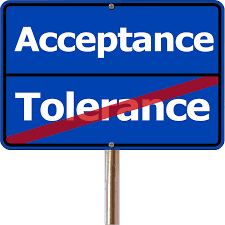
Today, more customers are using bitcoins because more legitimate companies and businesses are accepting them as a form of payment.
3.2- Control over capital
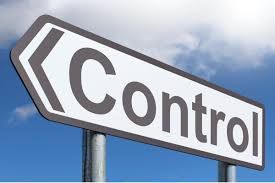
Many currencies and their usage outside of their native country are being restricted to an extent, thus increasing the demand for bitcoin.
3.3- Reduced remittance

Around the world, many governments are implementing policies that regulate remittance made from other countries either by writing new regulations or making the charges significantly high. This restriction of not being able to send money overseas is driving more people toward cryptocurrencies such as bitcoin.
3.4- Security

As we’ve discussed earlier, bitcoins use blockchain technology which is a solid and secure technology. Users of cryptocurrencies have already started to experience the benefits of using such a robust technology. This offering of a more secure way of transacting in our present ecosystem is a huge plus.
4- A look into blockchain’s future developments

Blockchain’s future developments will be mainly based on its robust built-in abilities. It’ll act like a tool for bringing everybody at the highest level of accountability. Here’re some major impacts of blockchain’s future developments.
4.1- Cybersecurity

In the blockchain, all information is verified and encrypted utilizing advanced cryptography, making the technology resistant to hacks and unauthorized changes. While centralized servers can be highly susceptible to hacking, human error, corruption or data loss, using a distributed, decentralized system like blockchain will allow data storage to be more robust and safe against attacks.
4.2- Internet of Things
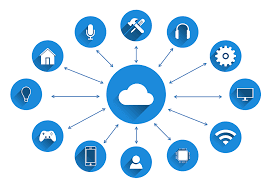
There’re lots of systems like doorbells, buildings etc that are powered by Internet of Things. These systems are embedded with sensors, network connectivity, and software. However, as these systems operate from a centralized location, hackers can gain access to them. Blockchain comes with the potential to address these security concerns as it decentralizes all the information, which is becoming increasingly important together with the increase in IoT capabilities.
4.3- Healthcare

While patients’ medical information can be stored in a central location, this centralization of such personal information makes it highly vulnerable. With the huge amount of private information collected by healthcare providers, it’s necessary to have a secure platform.
With the emergence of blockchain and its implementation, healthcare organizations can create a secure database to store medical records and strictly share them with patients and authorized doctors.
4.4- Unified communications

With the implementation of blockchain, it’s possible to enable safer, faster and more reliable communications. Digital or automated communication based on pre-built algorithms is already taking place in some industries.
Implementation of blockchain can shift the entire landscape to allow authorized communications that occur more freely in the automated environment, thus enhancing the reliability and safety of the communications.
4.5- Making donations
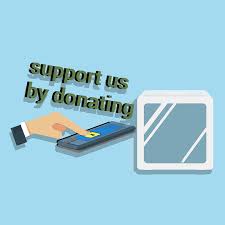
People, who donate for noble causes, are often concerned about the fact that what percentage of their donation is truly being given to charities. Implementation of blockchain can ensure that these donations reach exactly where they actually needed to go.
Already, bitcoin-based charities are developing trust through smart contracts together with online reputation systems and letting donors see where their donations actually go through a transparent and secure ledger.
5- Artificial intelligence versus blockchain
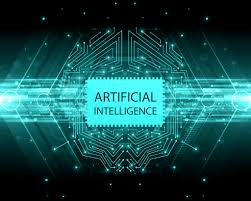
Both artificial intelligence and blockchain are major trends of today’s world and are being talked about widely. A lot of implementation of AI can be seen today across industries – from advanced computer vision and machine translation to processing and analytics of huge datasets. Companies with adequate resources are already making use of this technology to improve their operational efficiency and increase profitability.
On the other hand, the emergence of blockchain that is equipped with distributed ledgers and advanced cryptographic tools. Popularized by bitcoin, blockchain is considered as one of the biggest innovations that have the ability to disrupt technology. Let’s have a look at a small AI-blockchain comparison to get a clear idea of the differences between these two technologies.
- Blockchain in distributed and decentralized in nature as opposed to AI’s more centralized infrastructure.
- For now, AI is like a black-box solution while blockchain tends to be more transparent in every transaction processed.
- While centralized providers own and operate a significant number of AI technologies, a lot of the blockchain players publish all their codebases as open-source code which can be inspected by anyone at any given point of time.
- AI is based on a lot of probabilistic formulas, while the blockchain is more deterministic by nature.
Presently, AI startups are being increasingly acquired by tech giants. These organizations rely on massive amounts of data for training their AI agents to gain a huge competitive advantage. Centralized AI leaves room for abuse like huge surveillance of people using computer-vision-powered technology and face recognition. Also, creating solutions based on a centralized environment needs organizations to hand over the control of their data to third parties.
6- Combining AI and blockchain
The concept of AI is heavily used for denoting computers which can work in projects where the intervention of human intelligence is required. Technologies like machine learning, artificial neural networks, deep learning etc make this possible.
Blockchain stores digital information in a distributed and encrypted manner. It allows developing a highly secured database that can store all the information in a structured manner and make it publicly available. While humans can teach computer algorithms to increase their capabilities, the developers of AI aren’t able to predict an AI system’s way of thinking.
Put simply, we can develop the algorithm that’ll teach the computer to analyze massive amounts of data, we cannot predict how that algorithm will develop. If an AI system’s decisions are recorded in the blockchain, we’ll receive the database and will be able to see the decision taken by the AI system and to explain their logic. It’ll also ensure the security of the information as the information stored in the blockchain cannot be altered.
Conclusion

Despite the benefits of merging AI and blockchain, there’re some challenges related to security that need to be taken care of in order to make the integration successful. However, uniting both these progressive technologies has the potential to revolutionize the way business is conducted across the globe.
. . .
To learn about blockchain, click here and read our another article.
The post The Change Started with Blockchain appeared first on Magnimind Academy.
]]>The post Future and Pros of Blockchain appeared first on Magnimind Academy.
]]>It’s important to understand that though some people often use Bitcoin and blockchain interchangeably, in reality, they’re absolutely different. Put simply, Bitcoin is a form of virtual currency and blockchain is the underlying technology that makes it possible. If you’re interested in purchasing any cryptocurrency including Bitcoin, it’s important to have a good understanding of blockchain technology, why it’s being widely used, and what lies ahead in the future of it.
1- What is blockchain?

Put simply, blockchain refers to a virtual, public ledger that records everything in a transparent and secure manner. Here, all the data is held in an interconnected network of computers that’s owned and run by only the users themselves.
Although the technology was initially developed to work only in the financial arena, it has already started taking over other industries through its huge potential and slowly becoming an absolute game changer. According to some experts, blockchain technology is much more promising than the cryptocurrencies it was designed to support. With its implementation, more valuable usage opportunities are coming into existence almost regularly.
2- Major advantages of using blockchain

Here’re the major pros of blockchain for which the technology is being widely adopted across industries.
2.1- Decentralization

World’s largest corporations use centralized data systems as well as servers. Even though these corporations implement and maintain best network practices, their data systems and servers act as attractive targets for hackers and the operations may get affected.
Decentralization offered by blockchain prevents this problem and this is why this technology is being adopted by several industries. Here, every node on the network holds the same data as the others. Thus, in the event of any node breaking down, it won’t affect the entire network.
2.2- Transparency

One of the biggest pros of blockchain is that the technology is open source in nature. It means developers and other users have the ability to modify it as they deem fit. But what’s more important about blockchain being open source is that it makes modifying logged data incredibly difficult. At any given point of time, since there’re numerous eyes on the network, someone is most likely to see that the logged data has been modified.
2.3- Security

As we’ve discussed earlier that no single actor can manipulate the blockchain network, it helps to take security to the next level. Here, whatever is performed on one node has to be replicated as well as agreed by other nodes before the action becomes active. This means a single actor like an employee’s hacked computer or a compromised employee cannot take the entire blockchain network down.
2.4- Cost-effective

Reduced transaction cost is one of the other biggest pros of blockchain. The technology allows business-to-business and peer-to-peer transactions to be completed without any involvement of a third-party like a bank. This elimination of the involvement of middleman leads to reduced cost for the businesses or users over time.
2.5- Quick transaction settlements

It’s widely known that transactions take days to settle completely when it comes to traditional banks. This delay mainly happens due to protocols in software, fixed business hours, and the difference in time zones, among others. On the other hand, blockchain technology works round the clock, which means transaction processes based on it are completed relatively more quickly.
2.6- Ability to keep both current and historical records

When working with regular databases, it’s quite difficult to check historical transactions. In blockchain, all historical and current transactions are recorded securely in one place. So, if you want, you can go back to check the first blocks to learn where it all started. Here, every single block of information is contained, from the very beginning of it until just a couple of minutes ago.
2.7- User control

The reason why blockchain is particularly encouraged by cryptocurrency investors is its control aspect. Here, users and developers control all their transactions and information instead of having a third-party perform it. In other words, you can consider blockchain to be something that’s by the people and for the people.
So, you can see that blockchain technology offers a spectrum of revolutionary benefits. Altogether, they offer the most profound quality of this technology – it doesn’t require trust to interact and transact safely. With the help of blockchain technology, traditional systems can be transformed into dynamic systems where trust doesn’t matter as it’s no longer required. This facilitates establishing ownership of anything unquestionably, without the requirement of a central authority.
3- Industries that widely use blockchain technology

Blockchain technology is being steadily adopted by some specific industries to enjoy the above benefits. Let’s have a look at them.
3.1- Quality assurance

If an irregularity is observed somewhere along the chain, a blockchain-enabled system can lead the user to its point of origin. This makes it much easier for users to carry out investigations and execute necessary actions. You can consider the food sector, for example, where tracking origination, batch information etc is crucial in order to maintain quality and safety.
3.2- Supply chain management

In this industry, blockchain offers the advantages of cost-effectiveness and traceability. For example, businesses can use a blockchain to track the origin of goods, their movement, and quantity, among others. This brings an enhanced level of transparency while simplifying processes like production process assurance, ownership transfer, payments etc.
3.3- Accounting

Blockchain technology can be used by accountants to record transactions, minimize human error, and increase accuracy. Blockchain-based accounting systems are also able to protect sensitive data from fraudulent or illegal manipulations.
Here, an accounting change needs to be verified by the network of nodes. Put simply, accounting heavily encircles audit trails and blockchain helps to develop a secure audit trail.
3.4- Global payments

This is one of the most prominent industries that can benefit from the implementation of blockchain technology. There’re some services that can effectively transfer money across the globe. Some of the major issues with them are high fees, slow operation, absence in some countries etc. When it comes to blockchain-based currencies, the fees are significantly lower. In addition, a blockchain-based payment network also boosts of speed and security.
There’re lots of other industries that rely on blockchain to a great extent. However, there’s one thing facilitated by this technology that can benefit every type of business. You’re probably aware that time-consuming contractual transactions can lower the growth of any business, especially for organizations that process a huge amount of communication consistently. With smart contracts, agreements can be validated, signed, and enforced automatically through a blockchain construct, thus helping the business save both time and money.
4- Future of blockchain

Blockchain technology comes with immense power to impact almost every industry. Based on recent developments in the field, here’s what the future of blockchain would look like.
4.1- Blockchain as a service

Just like other platforms help organizations to manage operations, we can expect to see the growth of new platforms with decent features for implementing a blockchain network for businesses. Blockchain as a service or Baas is a cloud-based service that can be leveraged by companies without the need for setup and infrastructure.
4.2- Hybrid blockchain

A hybrid blockchain is the combination of both private and public blockchain. The major advantage of a hybrid blockchain is that specific parts of the network can be kept private, and specific parts public. This would be faster and cheaper than a public blockchain, while allowing access to the blockchain advantages of the same.
4.3- Implementation of blockchain in big data

With features like decentralization, immutability etc, blockchain can take care of two major challenges of working with big data – authenticity and restricted access to maintain quality of data and control. Data security and privacy are unquestionably two major concerns to businesses. Centralized data is insecure to a good extent. But with blockchain, data can be managed by the users generating the data, thus leading to more data security and privacy.
In addition, data generated through blockchain needs less scrutiny as the probability of manipulating such data is extremely low. It combines cryptography and hashing to develop data stored in a series of blocks that’s almost immutable. So, blockchain with big data is expected to become a powerful tool for both small and big businesses, redefining the way data is being handled.
Final takeaway

As with any technology, blockchain also comes with some disadvantages like complexity, lack of adequate resources, and the probability of human errors, among others. However, considering the fact that blockchain ticks all the right boxes of becoming the technology of the future, there’re lots of reasons to learn it and if possible, get certified in it.
Though the technology is still confined to a limited number of industries, there’re lots of possibilities for it to expand its reach to various other domains soon enough. Though it may take a couple more years, blockchain is certainly going to change the tech domain once again.
. . .
To learn about artificial intelligence, click here and read our another article.
The post Future and Pros of Blockchain appeared first on Magnimind Academy.
]]>